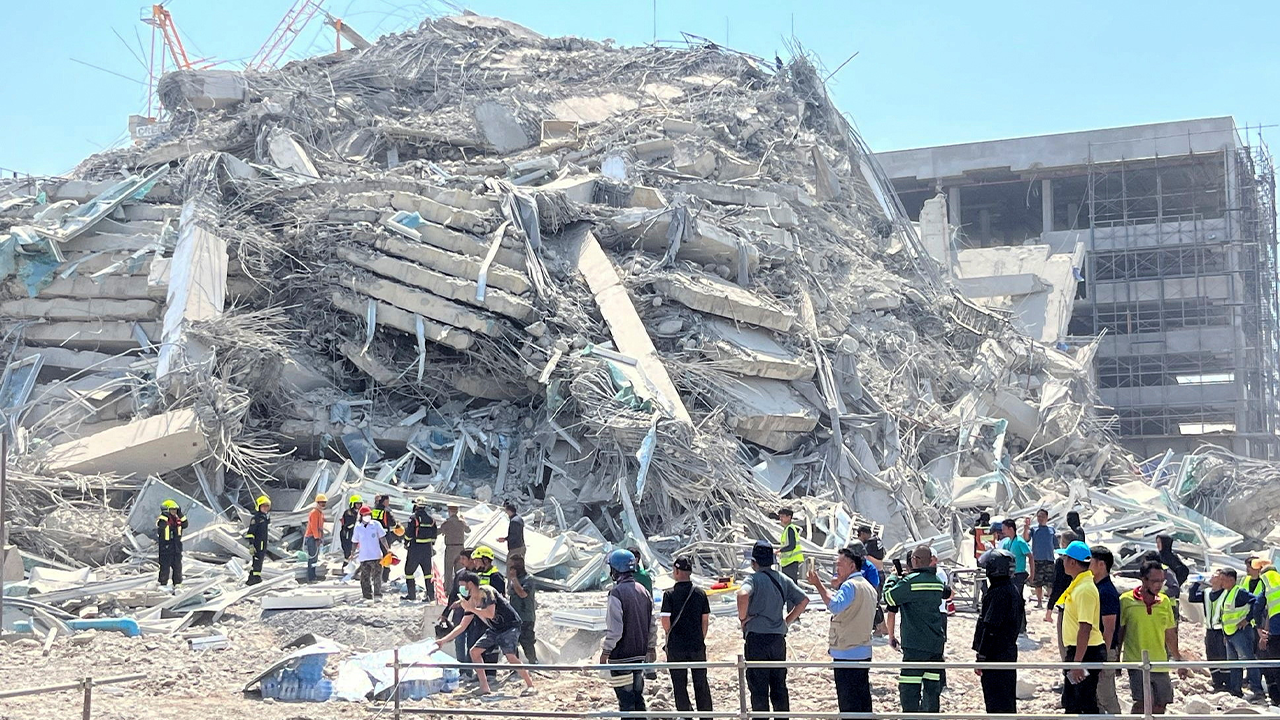Catastrophic 7.7 Magnitude Earthquake Strikes Southeast Asia
A catastrophic earthquake measuring 7.7 on the Richter scale has struck the border region between Burma and Thailand, leaving a trail of destruction and despair. As news of this disaster unfolds, the impact on the local communities is becoming increasingly apparent. With entire neighborhoods in ruins and emergency services working tirelessly, the full extent of the damage remains to be seen. This article delves into the consequences of this devastating event, the ongoing rescue efforts, and the broader implications for the region.
Understanding the Earthquake’s Impact
The earthquake struck in the early hours, sending shockwaves that were felt across multiple countries in Southeast Asia. Seismologists have reported that the tremor’s epicenter was located near the border, affecting both urban and rural areas. The immediate aftermath revealed catastrophic destruction:
- Loss of Life: Early reports suggest a tragic loss of life, with estimates rising as rescue teams reach the most affected areas.
- Injuries: Thousands have sustained injuries, with hospitals overwhelmed by the influx of patients.
- Infrastructure Damage: Buildings, bridges, and roads have succumbed to the quake, complicating rescue and recovery efforts.
- Displacement: Many families have been displaced, seeking shelter in makeshift accommodations as aftershocks continue to rattle the region.
Rescue and Recovery Efforts
In the wake of this catastrophic event, local authorities and international aid organizations are mobilizing resources to provide immediate assistance. Rescue teams are working around the clock to locate survivors trapped beneath the rubble, employing heavy machinery and search dogs in their efforts.
As rescue efforts progress, several key initiatives are underway:
- Search and Rescue Operations: Teams are scouring debris fields, utilizing advanced technology to detect signs of life.
- Medical Assistance: Field hospitals are being set up to treat the injured, with medical supplies urgently needed.
- Food and Water Distribution: Aid organizations are distributing essential supplies to affected communities, ensuring that basic needs are met.
- Psychological Support: Counseling services are being offered to help individuals cope with the trauma of the disaster.
Community Resilience in the Face of Adversity
Despite the overwhelming challenges, communities are coming together to support one another. Neighbors are sharing food and shelter, while local businesses are rallying to provide resources. The resilience displayed by the people of this region is inspiring, showcasing the strength of human spirit in times of crisis.
Moreover, social media platforms are playing a crucial role in disseminating information and coordinating relief efforts. People are sharing updates on missing individuals, as well as resources available for those in need.
Lessons Learned from Past Earthquakes
As the region grapples with this disaster, it is essential to reflect on lessons learned from past earthquakes. Historical data indicates that Southeast Asia is particularly vulnerable to seismic activity. The catastrophic 7.7 magnitude earthquake serves as a reminder of the importance of preparedness and response strategies. Key takeaways include:
- Building Codes: Stricter enforcement of building codes can minimize structural failures during earthquakes.
- Community Preparedness: Regular drills and education on earthquake safety can save lives.
- Emergency Response Planning: Governments must develop comprehensive emergency plans to ensure swift action during disasters.
The Role of International Aid and Collaboration
The catastrophic nature of this earthquake has prompted offers of assistance from various countries and international organizations. Collaborative efforts are vital for effective disaster response. Countries with experience in managing such crises can provide invaluable support, including:
- Emergency Supplies: Aid packages containing food, water, and medical supplies can be quickly mobilized.
- Technical Expertise: Specialists in disaster management can assist local authorities in navigating the complexities of recovery.
- Financial Aid: Donations and grants can help fund rebuilding efforts in the long term.
Looking Ahead: Rebuilding a Stronger Future
While the immediate focus is on rescue and recovery, the long-term implications of the earthquake cannot be overlooked. Rebuilding efforts will require a coordinated approach, focusing on enhancing resilience against future disasters. This involves:
- Reconstruction of Infrastructure: Investing in resilient infrastructure that can withstand seismic activities is crucial.
- Community Engagement: Involving local communities in rebuilding efforts ensures that their needs and concerns are addressed.
- Environmental Considerations: Sustainable practices should be integrated into rebuilding efforts to protect the environment.
Conclusion
The catastrophic 7.7 magnitude earthquake that has struck Southeast Asia is a stark reminder of nature’s power and unpredictability. As the region begins to recover, it is essential to focus on both immediate needs and long-term resilience. The strength of the human spirit, combined with the support of local and international communities, will play a pivotal role in the healing process. Together, we can rebuild not just what was lost, but a safer and more resilient future for all.
See more ABC News Feed



